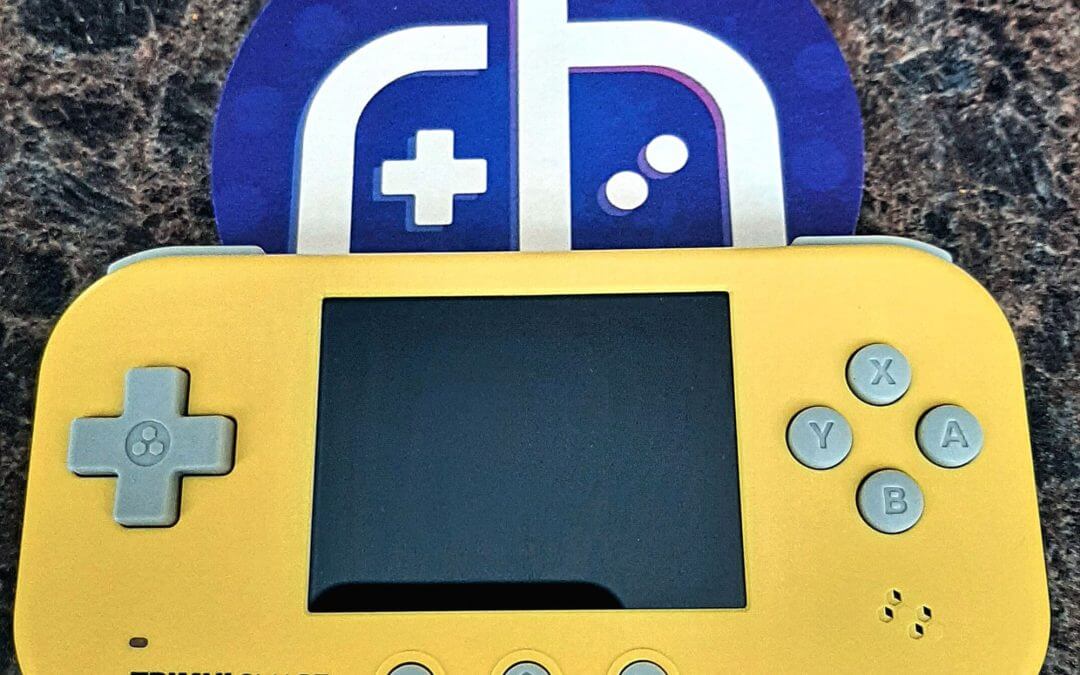(This review has been written and provided by Rocketman824)
So you’re here because you need another handheld device to play your legally acquired game backups. You want a little one, a mini one if you will, but not “THE” Mini one. You want it to be a cute color like purple or yellow, you want it to be educated. Well I have good news! Such a device exists and is attainable for little more than money. Yeah, just money. I introduce to you the TrimUi Smart; a very pocketable device that packs a good punch and an even better look. First impressions when I got it in hand? Feels nice, looks nice. First impressions when turning it on? Looks fine, acts fine. However, the initial experience when trying to play one of the included games left a bit to be desired.
About five minutes into the use of the handheld I was left with a mixture of feelings; so many feelings. After spending a bit more time, I worked through my feelings and gathered my thoughts toward this smaller member of the handheld community. I like the color, it pops. The look is sleek. The screen is…there. The size puts it into the “small” category of handhelds, but it is not what I would call tiny. Mini? Maybe. No doubt it is a worthy pocket-pal, but is it worth the price? Does it fit into your collection? Does it have a niche? Well, let’s get into it.
Hardware

Have you ever seen an Altoids tin? Well, this thing is shaped a bit like that. With a horizontal orientation and rounded edges, the TrimUI Smart has a pleasing look and feel. The plastic has a soft matte finish that pairs well with the pastel colors it is offered in (yellow, purple, white, and teal.) The 2.4-inch screen takes up roughly one-third of the space on the face, and is centered of course. Face buttons adorn the right side while holes for a single speaker sit directly below them. Three circular buttons run along the bottom below the screen and are each engraved with a symbol. A D-pad sits to the left above the white power light and somewhat bold branding. When you flip the device over there is little more than some centered text and teensy-tiny nubs on each corner to prevent the back from scuffing. The top holds the power switch (yes a switch, not a button) and the L and R buttons, the sides are bare besides a lanyard hole on the left. Beneath all of that are the SD card slot, labels for the three symbolled buttons, and the USB-C charging port.
The Screen
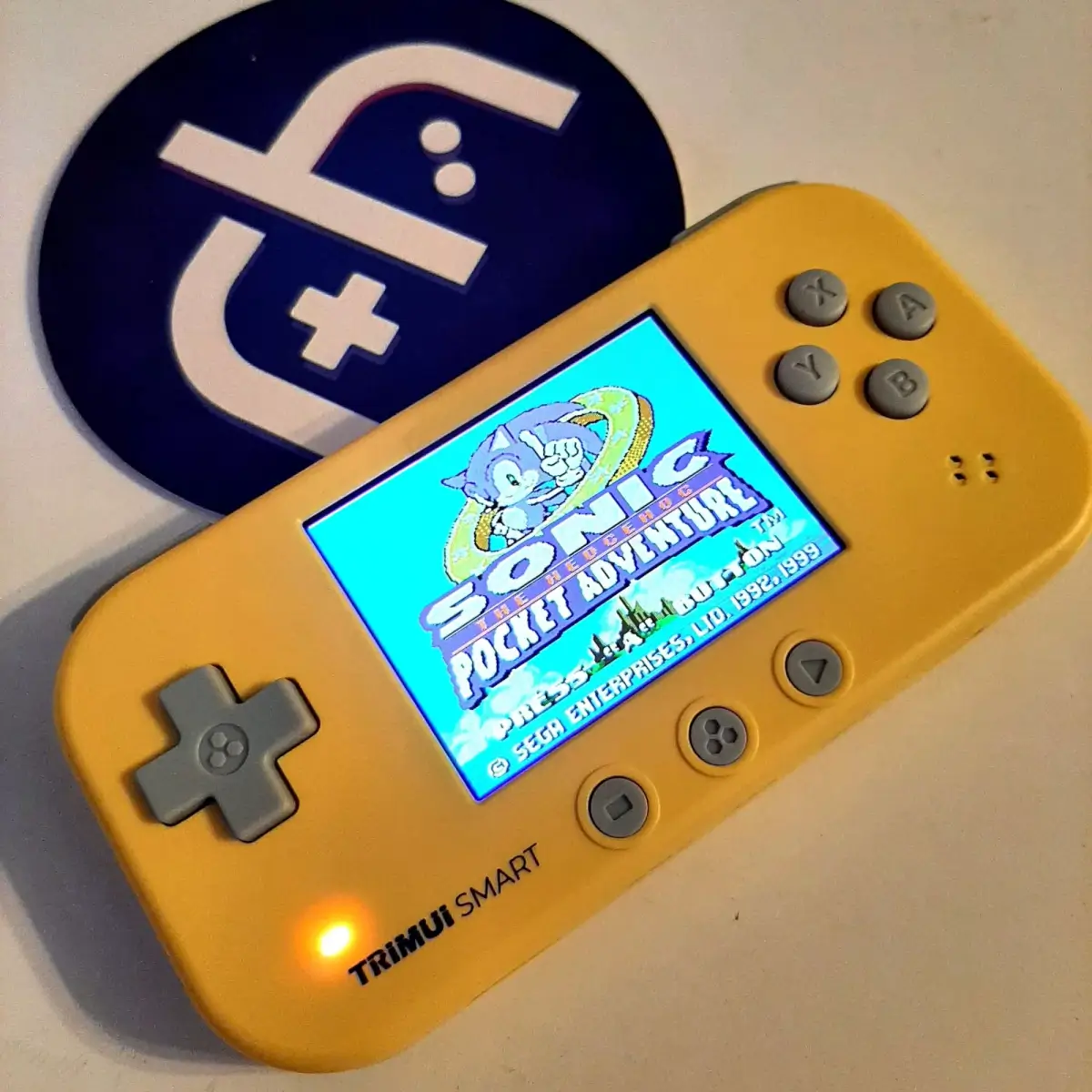
When it comes to playing retro games, the way we see them can greatly affect how much we enjoy them. Things like size, clarity, resolution, color saturation, and bezel size all contribute to our opinion of a screen. This device has a 2.4-inch IPS screen, which is pretty small by today’s standards. Of course, the device itself is small, but considering things like the Miyoo Mini exist with a screen that takes up nearly half of its face real estate, this screen size is just lacking. Resolution sits at 240×320 and does provide for a decent-looking image, it just happens to be that there are better-looking ones out there. When you pair the size and the quality of the image it’s obvious that the screen is underwhelming. However for the device and the systems which it can play, it is serviceable: colors look correct, the sharpness is good enough to provide a clear picture, there is no tearing, and the brightness setting (levels 1-10) provides great versatility. On 1, it’s dim enough to play in the dark, and at 10, the bright screen still stands out under bright light. I would not say the screen is the reason to get the TUIS, but it shouldn’t scare you away either.
The Buttons
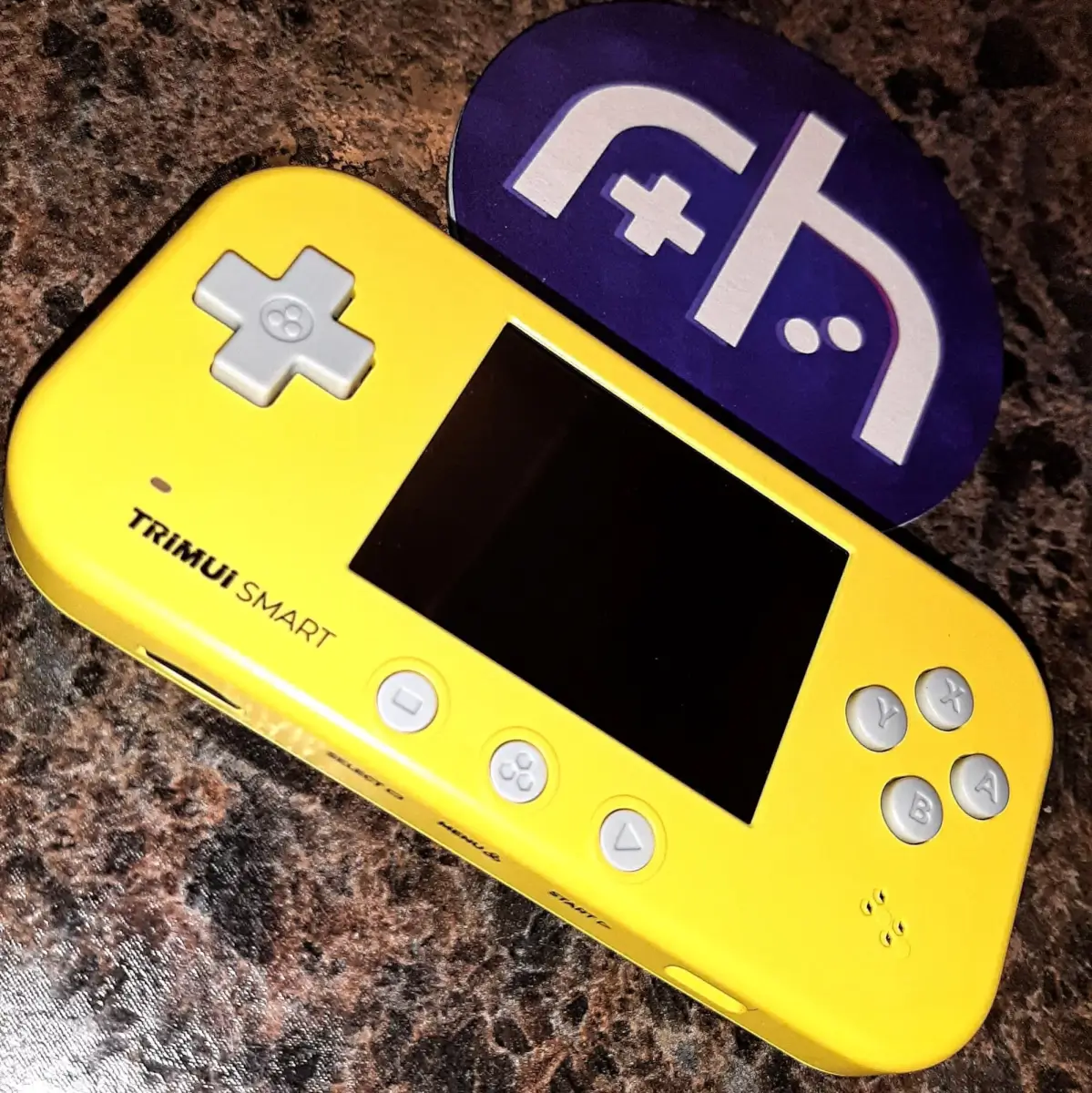
Ah yes, the part of a handheld that could be called your fingers’ friends. Or your fingers’ enemies. Whether you like the particular buttons on a handheld depends on many factors, including but not limited to: clicky vs. mushy, size/depth, amount of travel, and even color. The TUIS has clicky, small, gray buttons with little travel. The four face buttons are very close together and are labeled with the Nintendo-style ABXY. A little D-pad makes for easy use, but also adds to what I feel is a “cheapness” in the overall button quality. Start, Select, and a function button are spread underneath the screen and are VERY loud clickers and again feel somewhat cheap. L and R follow suit and basically mimic the feel of the face buttons, which is nice for consistency, but unfortunate for those who dislike the buttons as a whole.
Functionality-wise the buttons certainly work as intended and are quite responsive. For something like classic turn-based RPG’s, I actually found them pleasant enough to use. However, while doing some platforming I found that the button noise and feel were just not for me. I do appreciate a nice power switch, but on the flip side of that coin, WHERE are the volume buttons? I feel that that should have used the left side of the device to house a volume slider that, in tandem with a power switch, would create a sort of ‘old school’ feel. My main thought when the TUIS buttons cross my mind? Not buttons I’m very interested in.
The Internals
The TrimUI Smart does in fact have fairly strong insides, on paper at least, starting with the AllWinner S3 chip running at 1.5GHz. Paired with 128MB of LPDDR3 RAM, playing games in the PS1 era is certainly possible, with that basically being the hard cap on performance. 8GB of storage is built-in and the micro SD card slot provides the ability to expand storage further, though I would say anything more than a 64gb card would be overkill in this device. A 1000mAh battery provides the juice and lasts a fair amount of time (claimed to be 3.5 hours, but I found it closer to 2-2.5) depending on the systems you’re playing. The speaker provides sound that definitely gets loud and sounds decent. I do think it does not get quiet enough. Even on the lowest volume, it is just a tad louder than I would think a level 1 volume would provide. Wi-Fi is on board and Bluetooth is there as well providing a rare opportunity for things like retroachievements to be used on such a small device.
The combination of the size, shape, buttons, screen, and internals makes this a valuable member of the ‘mini’ handheld community, but I must say besides the addition of Wi-Fi and Bluetooth connectivity, the TrimUI Smart really does not make its own mark on the industry.
Software
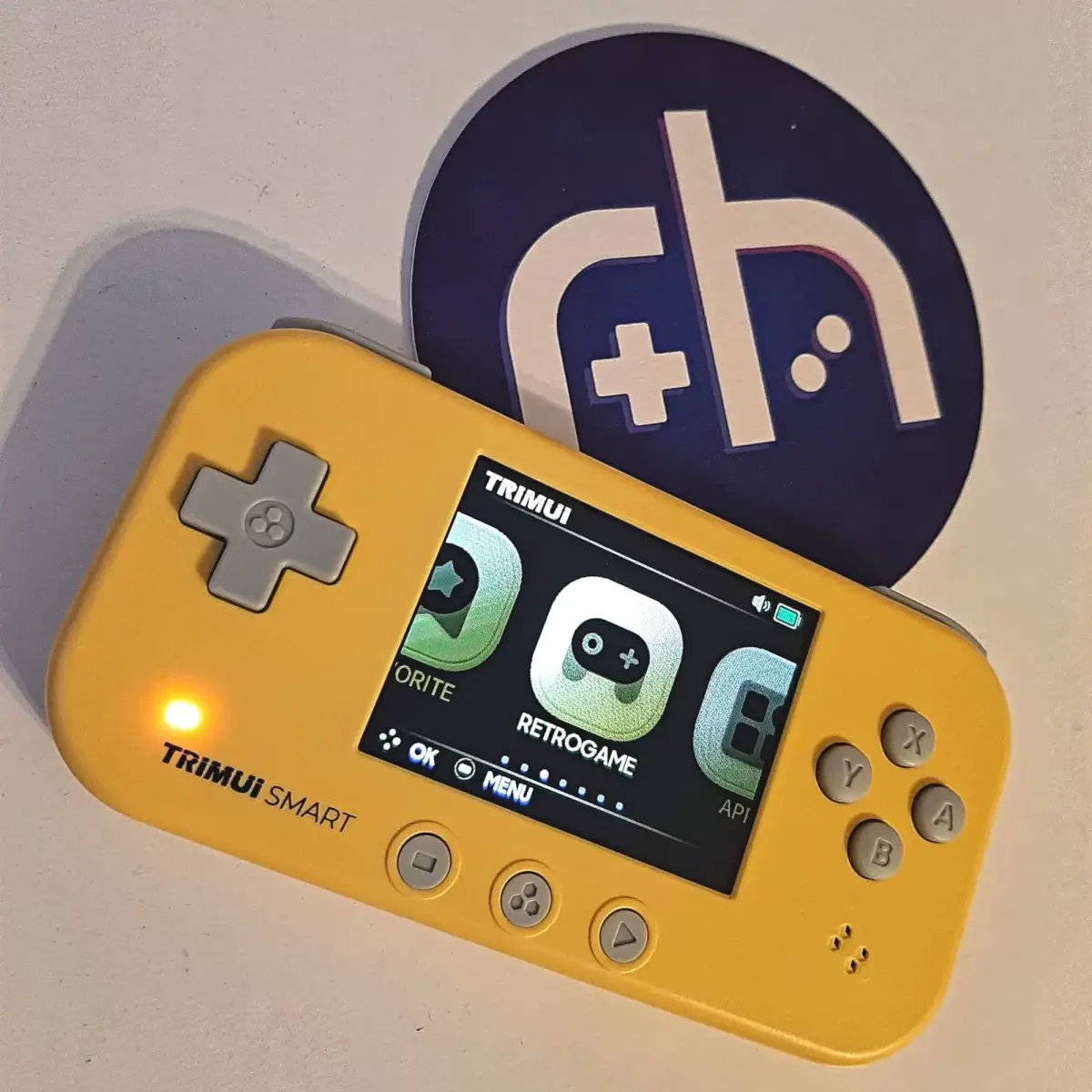
This is frankly where the TUIS stumbles most. The stock Linux firmware that this thing runs on is…well, I am just going to go ahead and say poor. If I saw this firmware standing on a corner, I would give it a dollar. From the moment you turn it on, you are greeted with an underwhelming interface that has loud, annoying background music and sluggish performance. When I began testing games, I noticed a steady and constant stutter of video AND audio every 4 seconds or so, which made the game-playing experience immediately feel subpar. I assume that with the addition of custom firmware, this could be fixed, but the problem is nonetheless something to consider for people who plan to buy this just to play it as-is. Wi-Fi is easy to connect to and works fine, same with Bluetooth, which is nice considering they are prime features. A file browser is included but from what I can tell is mostly useless. The Settings menu allows you to set up your connections, change the key-mapping and CPU frequency, refresh your roms, change the language, and adjust the brightness and volume. The App menu is pretty bare but does allow you to enter Retroarch and adjust your settings there as you see fit. The systems you can choose from have neat little icons and look fine with the overall scheme of the firmware.
I think this firmware leaves a lot to be desired. For someone fresh into the retro handheld scene, the firmware here may leave them wishing they either purchased another device or had more experience with installing custom firmware. The improvements that are needed will, as usual, be left to the community to make, and I feel that takes away from what should be a ‘grab-and-go’ type of handheld. I sincerely hope most people that buy this device do so knowing that loading custom firmware is highly suggested.
So What It Can Play?
| Fully Playable |
|---|
| Atari 2600, Atari 5600, Atari 7800 |
| Nintendo Entertainment System |
| Super Nintendo Entertainment System |
| Nintendo Game Boy |
| Nintendo Game Boy Color |
| Nintendo Game Boy Advance |
| Nintendo Virtual Boy |
| Sega Master System |
| Sega Genesis / Mega Drive |
| Sega 32X |
| Sega CD |
| Neo Geo Pocket |
| Neo Geo Pocket Color |
| Mostly Playable |
| Sony PlayStation |
| Out of Reach |
| Nintendo 64 |
| Sega Saturn |
| Sega Dreamcast |
| Nintendo DS |
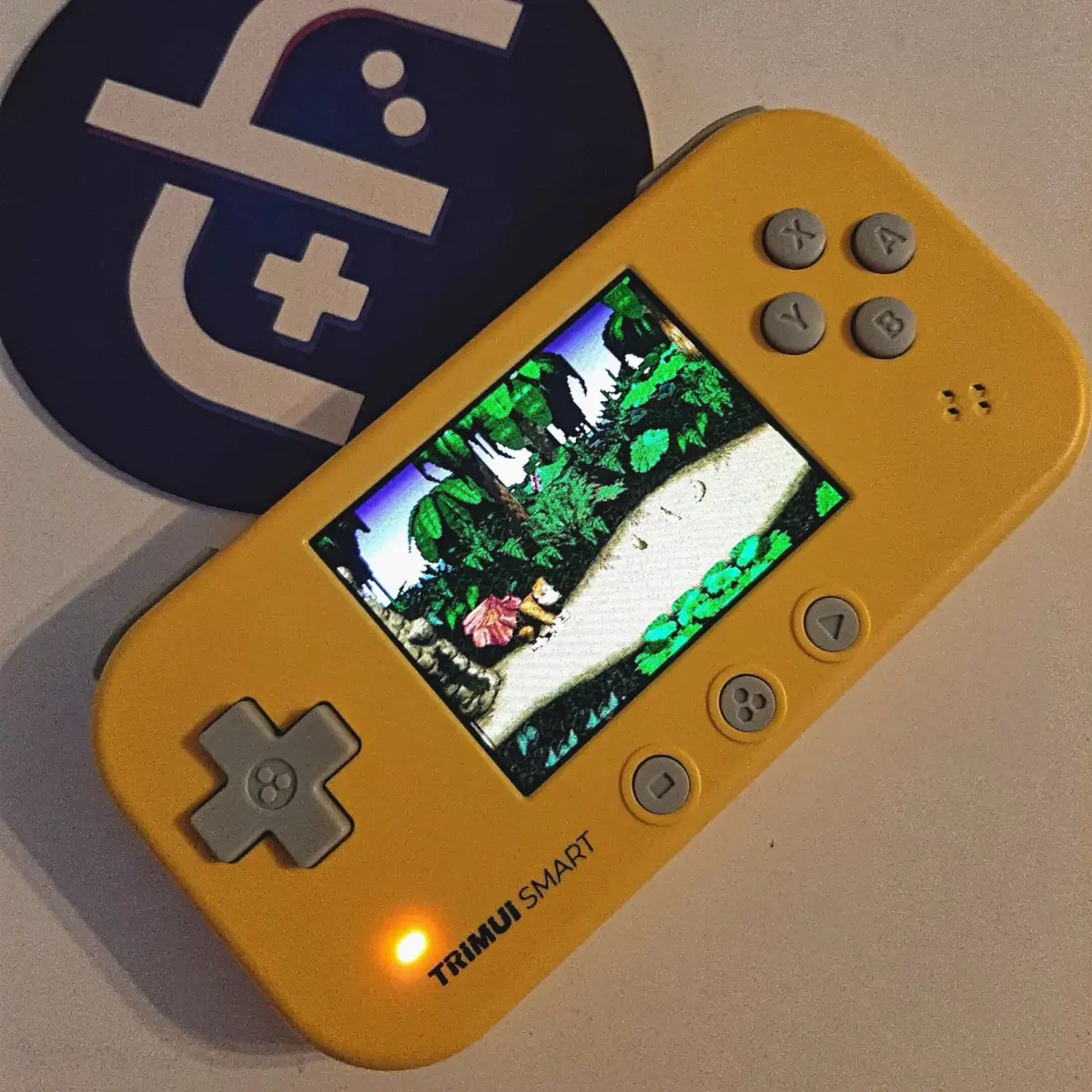
Besides the obvious gaming issues mentioned above (stuttering issues, audio skipping,) the games and systems I tested ran pretty well. Everything up to and including SNES ran fine. Even the PS1 games I tried worked well, looked good, and sounded right. I tested three games on the PS1 and experienced no problems of note. And to be honest, it was pretty fun to play PS games on such a little horizontal handheld. The buttons all responded well, the screen does what it needs to do, the speaker pumps out some serious sound (unless of course you barely cover it with your hand/thumb, then it all but goes silent,) and the ‘fun’ metric was there. From community testing, the Playstation 1 catalog plays pretty well up until the harder-to-run 3D titles, where something like Bloody Roar 2 begins running at 40-50fps rather than full speed. That is by no means saying that PS games do not run well on the TUIS, but it’s good to note that the library is not 100% playable at 100% speed. All that said I feel that the experience fell short. For a device of this price, I expect…more I suppose; a more complete package, more consistent performance, a more solid feel. I do not think it’s asking too much to be able to play the included games without such a glaring stuttering issue, and it’s unfortunate that the Smart doesn’t completely knock PS1 games out of the park.
Where To Buy
Conclusion
Delicious:
- Size and form factor; this thing is pocketable as heck.
- Colors. All of the colors offered look nice and add to a unique style.
- The speaker gets loud. Yeah I like that.
- Wi-Fi and Bluetooth inside provide opportunities for things like OTA updates and retroachievements on your favorite old games.
Suspicious:
- The screen just does not do it for me. Doesn’t make my loins stir. The size is underwhelming and the quality is just…okay.
- The buttons are too darn clicky.
- The stock firmware is frustrating and functions poorly.
- Lack of L2 + R2 buttons will affect some PS1 games’ playability, and the lack of volume buttons is maddening.
Final Thoughts:
- I came into the TrimUI Smart experience fully expecting to love the little thing. It has a great form factor, adorable colors, and Wi-Fi built in. It has a lanyard hole. It has a menu button. However, once I got it in hand I was underwhelmed in most cases. Maybe I am spoiled by the Miyoo Mini a bit, but I feel there were some serious missteps with the TUIS. The screen let me down as much as the poor firmware did. The buttons are not my type and are too close together. Even the lanyard hole let me down because…there should be VOLUME buttons above it! I’m not saying that this is not a passable handheld, but for $79.99, I feel there are better options out there for a bit better gaming experience. Maybe if you can snag one of these used, pick it up. But for now, I say the TUIS is not particularly the ‘smartest’ purchase out there, unless you REALLY want retroachievements on a small device. The TrimUI Smart is nice to look at, not as nice to play with.
(This review has been written and provided by Rocketman824)
